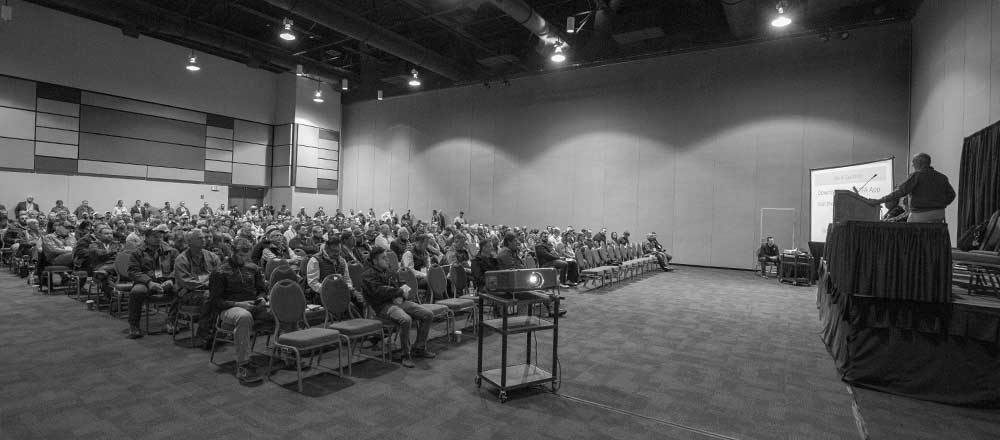
Attendees listen to the Tuesday, December 5, 2017, panel on grafting with Jim Divis, Mike Robinson and Dale Goldy in Kennewick, Washington.
There’s a difference between playing to win and playing to not lose, and Oregon State University economist Clark Seavert suggests growers play to win.
Winners, as he defines them, are growers who stay in the top tier of the tree fruit industry through good choices and execution, he said Tuesday at the Washington State Tree Fruit Association annual meeting.
Seavert was one of the headliners in a session about finding opportunities that played to a packed crowd.
Winning growers shoot for maximizing profits, not cutting costs. They establish clearly defined plans, adapt to change, use debt to expand and modernize, renew orchards at roughly 7 percent, broaden their harvest windows, pay employees well and diversify.
Do those things and do them well and he predicts roughly a 12 percent return on investment. Those playing to not lose — those who expand only with annual cash flow, pay lower wages and resist change — can expect 5 percent or lower.
Seavert also suggested growers study their orchard’s accounting data to the point where they can determine profits and costs block-by-block and variety-by-variety. About 85 percent of growers lack that ability, he suspects.
Seavert steered growers to AgBiz Logic, an online tool that helps growers analyze the costs and benefits of orchard investments they may be considering.
The well-attended session also featured advice on grafting and replanting, a primer on rootstock choices and soil moisture monitoring.
The conference continues this Tuesday afternoon and Wednesday.
– by Ross Courtney






Leave A Comment